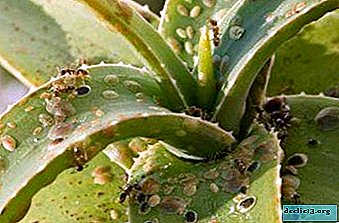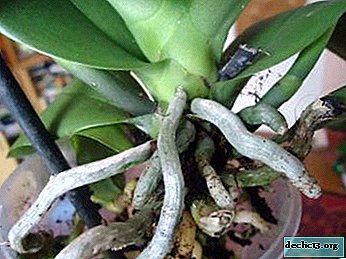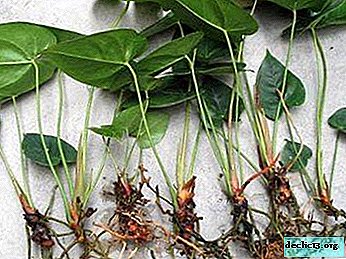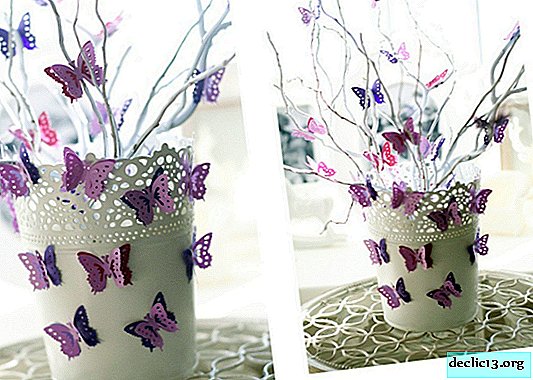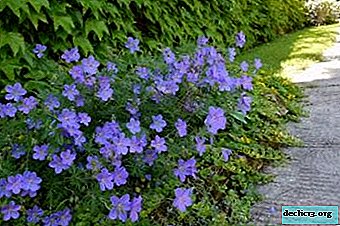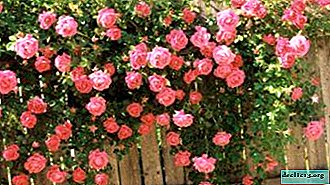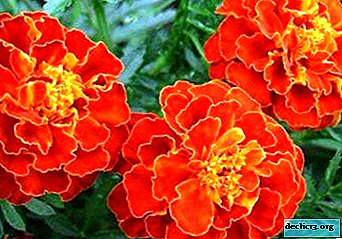How to organize care for the royal begonia at home? What does the plant look like in the photo?
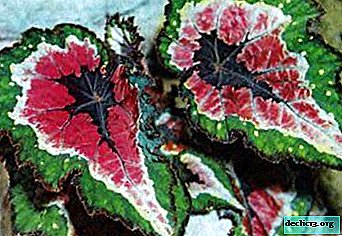
The diversity of begonias exceeds a thousand species. Among all the varieties there is a plant with a royal name.
Why exactly such a name? This is due not only to a beautiful appearance, but also to demanding care.
All begonias are very controversial flowers. There should be plenty of light, but only indirect; the soil should be moist, but not marshy; water cannot be too cold, but at the same time not warm. These are the requirements that this “queen” makes.
Looking only once at the leaves of our beauty, you can no longer forget this magnificence: Darker veins contrast sharply with the slightly brighter background of the leaves themselves. Here you do not even need to wait for flowering, a diverse palette is impressive without it.
We can not say about the rhizome of this plant: it is fatty, juicy. compacted and focuses mainly on the surface of the soil, therefore, does not require a deep pot.
The homeland of begonia is recognized by India and Asia. But in Russia he appeared at the beginning of the 19th century after the Napoleonic battle. People began to call him “Napoleon’s ear” or “elephant’s ear” for his outward resemblance to a reddened ear.
Breeding
Leaves
The most rational way to propagate begonia leafif you want to get from it several young shoots at once. To do this, you need to take one large, healthy leaf without damage.
There are three breeding options in this way.
Separation
 The sheet is divided into several particles. This must be done with a sharp knife from the middle to the edges. At the same time, do not forget that at least one vein must remain in each received element. About 10 parts can be extracted from one sheet.
The sheet is divided into several particles. This must be done with a sharp knife from the middle to the edges. At the same time, do not forget that at least one vein must remain in each received element. About 10 parts can be extracted from one sheet.- Distribute the resulting triangles into separate "houses" - containers with a special substrate (ordinary disposable cups can be used as mini-pots). Another option: plant the elements with the cut down into the soil.
- Next, arrange the plants the so-called greenhouses: cover with a film, a plastic cap or a cut bottle.Reference. Do not water the main soil during growth, but simply spray the leaves.
- After about 3 weeks, it's time to start hardening begonia: remove the cap of the greenhouse, each time increasing the time spent in the open air. During this period, the first young leaves should already appear.
- Three months later, the moment will come when it will be possible to transplant a young flower into a pot. But categorically it is not recommended to tamp the soil so as not to break small processes and not interfere with the further development of begonia. Enough simple watering with settled water at room temperature.
Incisions
- You will need a large leaf of begonia, which must be cut across the veins. Then prepare the soil, having moistened it beforehand, and put the cut leaf on it with the back side up. It is not superfluous to pin down stones near the incisions with stones.
- Covering the container with film, place it in a well-lit place. During the development of the seedling, it is again recommended that the soil not be watered, but sprayed.
- After the emergence of new plants, and this will happen in about a month, you can get rid of the film and settle the young begonia in separate "houses".
Whole leaf
This method is the easiest and most common among amateur gardeners, but has one serious minus: with this method of leaf propagation, only one new plant can be obtained.
- To do this, you just need to cut a healthy leaf and put it in a container of water.
- You can add one tablet of activated carbon to the water. Sometimes experts advise adding root too.
- To prevent the leaf from rotting, periodically cut it and change the water to fresh.
The appearance of roots is a signal that it is time to plant a “baby” in a pot. The first leaf will die after the formation of a new begonia bush.
Cuttings
Plus of this method:
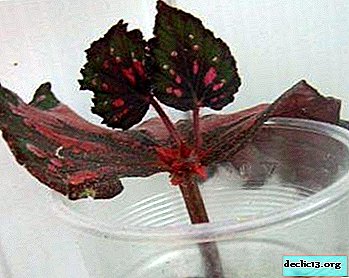 the fastest;
the fastest;- the most reliable;
- quite simple;
- universal for all types of begonias.
By the time of rooting, the stalk reaches a decent height - about 15 cm - and becomes so strong. which can easily reach the growth rate of their parents. A young shoot can begin to bloom almost immediately. The proportion of positive results does not allow not to rejoice at gardeners. With a clear implementation of the algorithm of this method of reproduction, this process will not cause anyone much trouble.
Royal begonia can also be cut by cutting off the top in adult plants:
- Cut the shoots so that at least 2-3 buds are preserved on the seedlings.
- It is enough to leave 2 leaves, and get rid of the rest so that they do not take away the strength of the sprout.
- Then the slices should be slightly dried.
- After that, place the handle in a transparent container with soft water at room temperature and observe the process of root development.
- After sprouting the roots to 1.5 - 2 cm, you can safely transplant the process into a flowerpot and continue to care for it, like an ordinary adult plant.
Royal begonia. Propagation by cuttings:
Seeds
If you choose this method of replenishing your flower garden, then you need to prepare for the fact that this business is quite troublesome and far from the fastest.
On a note. The most successful period for planting seeds is the end of February - the first decade of March.But before planting seeds, you need to select them and get them somewhere. We recommend buying only in specialized stores, where you will be offered two types of seed: ordinary and granular.
 The latter type is larger and therefore suitable for spot sowing in peat tablets, this will help to skip such a painful stage for young processes as picking. For planting seeds in peat tablets, the latter must be placed on a pallet and thoroughly soaked, then placed in them a seed granule and again arrange for each tablet a separate mini-greenhouse. The first two weeks only need to be watered through the pan. 14 days after the formation of the third leaf, the sprouts can be planted in separate pots.
The latter type is larger and therefore suitable for spot sowing in peat tablets, this will help to skip such a painful stage for young processes as picking. For planting seeds in peat tablets, the latter must be placed on a pallet and thoroughly soaked, then placed in them a seed granule and again arrange for each tablet a separate mini-greenhouse. The first two weeks only need to be watered through the pan. 14 days after the formation of the third leaf, the sprouts can be planted in separate pots.
For sowing ordinary seeds, it is best to choose a seedling box with loose soil rich in peat. Do not forget about drainage. So ventilation and the absence of swamps in the pallet are the main conditions for the full growth and development of young plants. Do not forget to cover the box with film or glass to maintain an optimal level of humidity.
The box should be in a well-lit place, but without direct sunlight! Over time, it is necessary to begin to temper the sprouts. And after three weeks, you can begin to pick them. We return the flowers to a bright place already in separate pots.
Now you know how to propagate begonia.
How to care?
Lighting and location
So how is it the plant is representative of tropical origin. it requires a lot of light, but not burning sun raysthat can burn the leaves and cause them to curl.
Reference! The pallor of a flower will inform you of a lack of light.But in the winter, it’s not out of place to place a begonia on the south side of your house. The most suitable option is partial shade.
Content temperature
The “Queen” loves warmth (ideally 16-22 degrees above zero). But it is necessary to protect it from dry air and draft. In summer, in good weather, you can even put a flower in the fresh air. In winter, it is allowed to lower the temperature a little, but do not forget to follow regular watering, otherwise the roots will begin to rot, the begonia will throw off the leaves. The most important condition for winter maintenance is that the roots should not be frozen, they are the ones who feed the entire top.
Watering
In summer, our plant requires abundant wateringbecause it will not tolerate dry soil. Begonias need moist air, but they are not recommended to spray the leaves themselves: pigmentation will appear on them. A suitable solution would be to place any container of water near the pot. It is better to wipe the dust from the leaves with a dry rag and very carefully so as not to damage the fragile begonia.
Top dressing
You need to fertilize the plant once a month with complex fertilizer. And do it only after watering, so as not to burn the roots.
Transfer
Begonia should be transplanted once a year. And every 3-4 years to update it, getting rid of old and planting young seedlings.
Plant photo
In this section you can find what royal begonia looks like in the photo, if you organize the right care at home.





Diseases and Pests
If powdery spots appear on the leaves of begonia, gray mold can be considered the fault. To get rid of this ailment of the plant, it is necessary to cut off all the affected leaves, and treat the rest with a fungicide solution.
Another one Begonia's enemy is gray rot, leprosy of which form watery spots with a gray coating on the whole flower, which rot after some time. In this case, the stems can break, the leaves turn black and curl, and the flowers themselves are covered with mucus. To save the plant, it must be sprayed with a 1% solution of Bordeaux fluid. You can also dissolve 2 g of copper sulfate and 20 g of laundry soap in 1 liter of water, and then spray the flower with this composition.
Small watery spots on the back of the leaves can manifest itself in bacterial spotting.
Attention! The war on the disease will not give any results, so the infected flower is destroyed.Yellow-green lines, gradually turning into bronze spots, ring spotting gives itself out. In this case, the plant will also have to be destroyed. For prevention, block the appearance of aphids and other sucking insects on begonias and get rid of weeds in time.
Yes, royal begonia is not easy to care for, but its attractive appearance justifies all the troubles.

 The sheet is divided into several particles. This must be done with a sharp knife from the middle to the edges. At the same time, do not forget that at least one vein must remain in each received element. About 10 parts can be extracted from one sheet.
The sheet is divided into several particles. This must be done with a sharp knife from the middle to the edges. At the same time, do not forget that at least one vein must remain in each received element. About 10 parts can be extracted from one sheet. the fastest;
the fastest;
